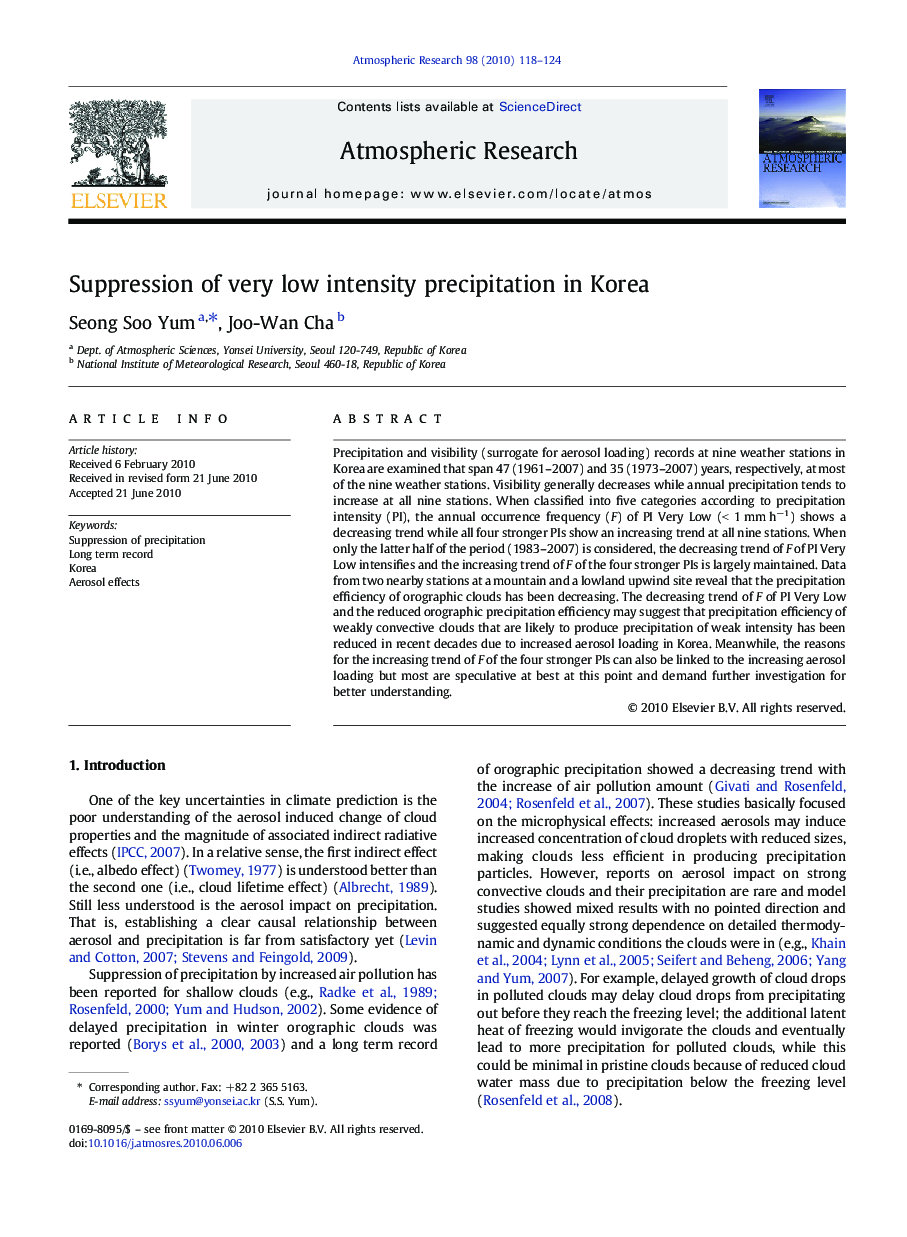| Article ID | Journal | Published Year | Pages | File Type |
|---|---|---|---|---|
| 4450578 | Atmospheric Research | 2010 | 7 Pages |
Precipitation and visibility (surrogate for aerosol loading) records at nine weather stations in Korea are examined that span 47 (1961–2007) and 35 (1973–2007) years, respectively, at most of the nine weather stations. Visibility generally decreases while annual precipitation tends to increase at all nine stations. When classified into five categories according to precipitation intensity (PI), the annual occurrence frequency (F) of PI Very Low (< 1 mm h−1) shows a decreasing trend while all four stronger PIs show an increasing trend at all nine stations. When only the latter half of the period (1983–2007) is considered, the decreasing trend of F of PI Very Low intensifies and the increasing trend of F of the four stronger PIs is largely maintained. Data from two nearby stations at a mountain and a lowland upwind site reveal that the precipitation efficiency of orographic clouds has been decreasing. The decreasing trend of F of PI Very Low and the reduced orographic precipitation efficiency may suggest that precipitation efficiency of weakly convective clouds that are likely to produce precipitation of weak intensity has been reduced in recent decades due to increased aerosol loading in Korea. Meanwhile, the reasons for the increasing trend of F of the four stronger PIs can also be linked to the increasing aerosol loading but most are speculative at best at this point and demand further investigation for better understanding.
